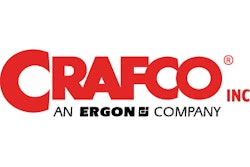One challenge for many paving and pavement maintenance contractors is protecting their margins. Evidently, a very high percentage of the transactions in the paving industry end up being decided on price – and only price. Is this true for your company? Assuming you are also encountering this same challenge, please read on.
Let’s first look at this from the buyer’s perspective. Please mentally select a product that you or your wife purchases for your home. Do you have that in mind? Since I cannot seek your input while I write this please allow me the liberty to select a couple of examples. Let us select groceries or gasoline. If you have a Walmart near you, my bet is that you have on occasion purchased at least one of these from Walmart. However, if the product or service being purchased is viewed as a commodity, then price is going to be the primary driver of your decision.
What is a commodity? A commodity is a class of goods or services for which there is demand, but which is supplied without qualitative differentiation across a market.
A box of Cheerios is pretty much the same whether you buy it at Kroger, Walmart or Target. By the way, that may not be the case relative to their service.
Therefore, if you are selling a commodity, the best way to make money is to be the low-cost provider. Let me emphasize that I said “cost” not necessarily “price.” Walmart has succeeded in their market over time by driving their costs down by leveraging their size, their suppliers and their distribution channel. However, unless your company is the size of Walmart and has the lowest costs, then competing on price is a losing proposition. So what do you do? How do you compete?
You either have to cut your margins so low that you only can make it with a very high volume – like Walmart does – or you need to change the game. People buy by comparing the products and services associated with the product. If the only differentiator of a product or service is price, you can only compete on price. As I have pointed out earlier, the only winner here is the one with the lowest cost structure.
Therefore, what needs to be done is to quantify other key differentiators of your offering than price.
I have facilitated with many customers their SWOT (Strengths, Weaknesses, Opportunities and Threats) analysis. When we discuss their strengths, many times I hear things like customer service, quality, and responsiveness. These are all excellent qualities of a company’s product or service. However, can you envision your competitors suggesting that they provide bad customer service, poor quality and lack of responsiveness as compared to your company? Of course not. The question is, how do you differentiate? What are your competitive advantages? How do you substantiate your claims?
The ground rules for outlining these differentiators, as I call them, or your competitive advantages as defined by J. Smith in her book Creating Competitive Advantage are as follows:
1. They need to be objective not subjective
2. They need to be quantifiable, not arbitrary. “We have great customer service; 95% of our business comes from referrals.”
3. They need to different – not already claimed – by the competition
4. They need to be not a cliché. Don’t tell me you exceed customer expectations. How do you know what these expectations are?
How is your business? Are margins down? Do you have some new wrinkles in your sales message that are different from last year? If you do things the same way going forward you will probably get the same or similar results. Is that what you are looking for in 2019?
Or, are you and your team able to enunciate your differentiators/competitive advantages? Seems to me that no matter what industry you are in unless you run the Walmart of that industry, you might want to invest some time in first identifying your competitive advantages and then figuring out a way to communicate them to your current customers as well as your prospective customers. The other alternative, assuming you have plenty of margin left, is to continue to give it away!
Roger Bostdorff is the President of B2B Sales Boost. He spent over 30 years with IBM in sales and sales management. B2B Sales Boost is a consulting company helping organizations improve their sales and overall business processes. He is also available for business speaking engagements. You can find more regarding B2B Sales Boost on the web at www.b2bsalesboost.com or calling 419-351-4347. If you would like to receive the B2B Sales Boost Newsletter, please send an email to [email protected]


![Lee Boy Facility 2025 17 Use[16]](https://img.forconstructionpros.com/mindful/acbm/workspaces/default/uploads/2025/09/leeboy-facility-2025-17-use16.AbONDzEzbV.jpg?auto=format%2Ccompress&fit=crop&h=100&q=70&w=100)








![Lee Boy Facility 2025 17 Use[16]](https://img.forconstructionpros.com/mindful/acbm/workspaces/default/uploads/2025/09/leeboy-facility-2025-17-use16.AbONDzEzbV.jpg?ar=16%3A9&auto=format%2Ccompress&fit=crop&h=135&q=70&w=240)








